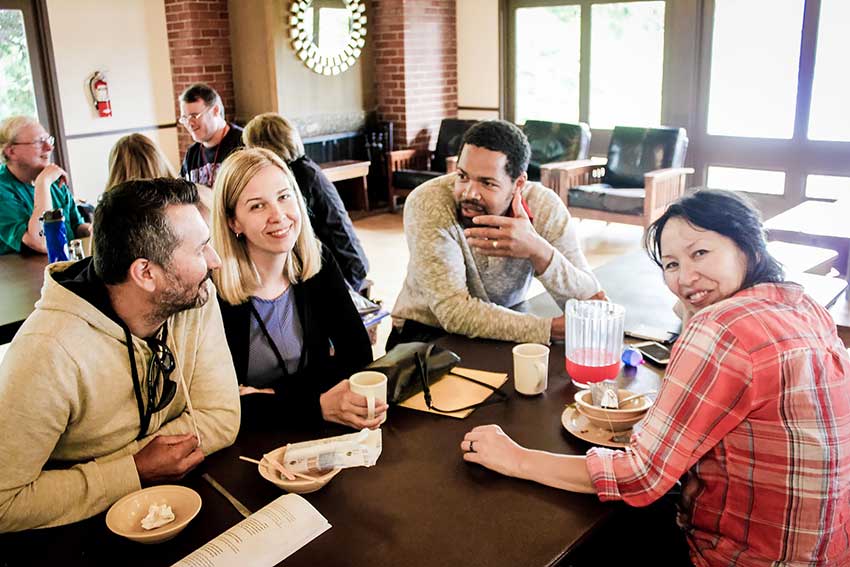
Baha’i schools will bring race amity conversation into second year

This past summer and fall, seasonal Baha’i schools across the United States collectively brought the diversity of the human garden into conversations about race amity and oneness. In three- or four-day sessions at about two dozen sites, participants studied and reflected with family members, neighbors and friends about the nobility of the soul and freedom from prejudice.
Soon, the next phases in this systematic effort will be in full swing. Baha’is in many corners of the United States have already been asked to continue with bold plans of action and invite people in their neighborhoods from diverse backgrounds to be part of a conversation on race unity and oneness.
To reinforce the effort, seasonal schools will continue to follow this path of learning in the coming year, going deeper into conversations on this most vital and challenging issue.

Case studies to stimulate conversations on specific issues will again be used in this year’s programs. “We are striving to build on strengths and incorporate the lessons learned to make the second-year program even more attractive to friends from the neighborhoods and fellow Baha’is,” says Kaveh Shahidi, coordinator of the committees that organize each seasonal school session.
Study materials for the summer and fall 2019 sessions centered on these case studies — stories of learning drawn from various experiences in neighborhoods and communities. As the group of friends depicted in each story encounters evidence of prejudice in its midst, members learn to use concepts and tools drawn from the Baha’i writings to untangle themselves from hate, prejudice and despair, giving way to love, joy and hope.
“The schools became a joyful space as the friends advanced together about this all-important conversation,” Shahidi says. “The feedback that each school has received has been overwhelmingly positive.”
At the Tennessee Baha’i School over Labor Day weekend, participant Carol Mansour acknowledges she felt some concern that not all participants began the discussion with a grounding in the basic guidance from Shoghi Effendi, Guardian of the Baha’i Faith, on issues of race in North America.
Still, she has shared with others her “optimism that finally the dialogue was beginning in a systematic way nationwide.” Mansour stressed the importance of approaching this work “systematically and carefully. … ‘Fellowship, fellowship, love and unity’ take work. Lots of intentional, prayerful work,” she says, quoting an exhortation from the Baha’i writings.

The Office of Education and Schools collaborates with the staff of Brilliant Star, the Baha’i children’s magazine, to create children’s materials for the seasonal schools.
At the Tennessee school, children’s class coordinator Jennifer Hampton was enthusiastic that the special “Spirit of Community” issue of Brilliant Star was provided as part of the curriculum.
“I have found that children love this magazine so much — even my 13- and 14-year-olds still read it and do some of the activities when it arrives at home in the mail,” says Hampton, whose specific teaching role at the school was focused on pre-kindergarteners.
“We used many of the activities from the magazine and I also pieced together some related stories about race amity from previous Brilliant Star magazines.”





